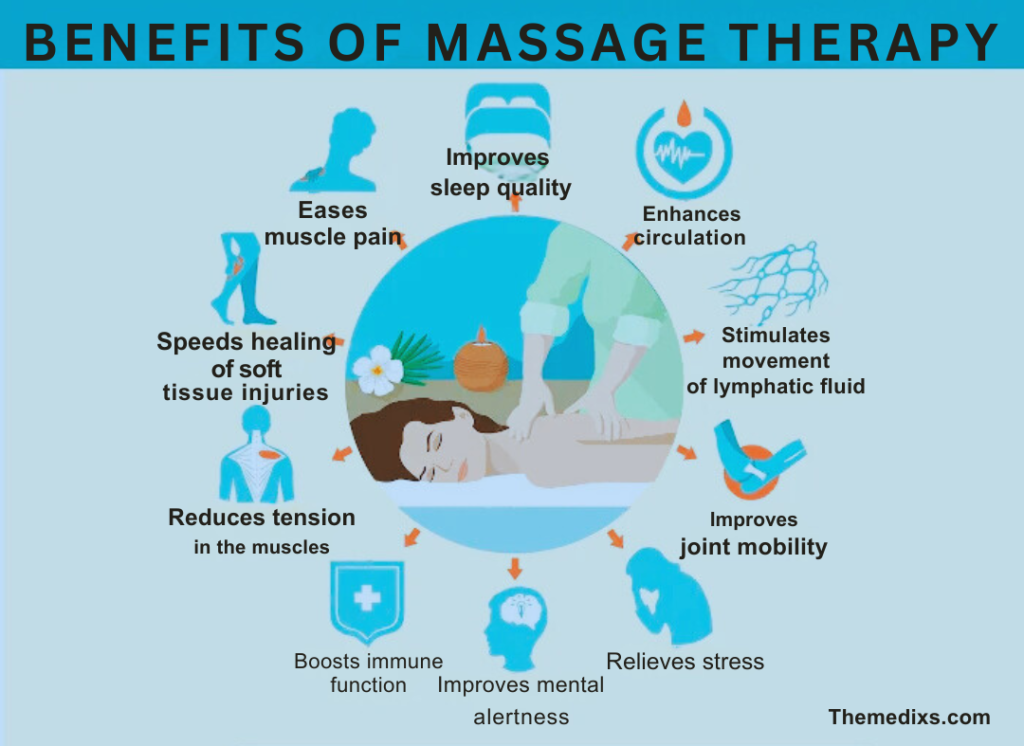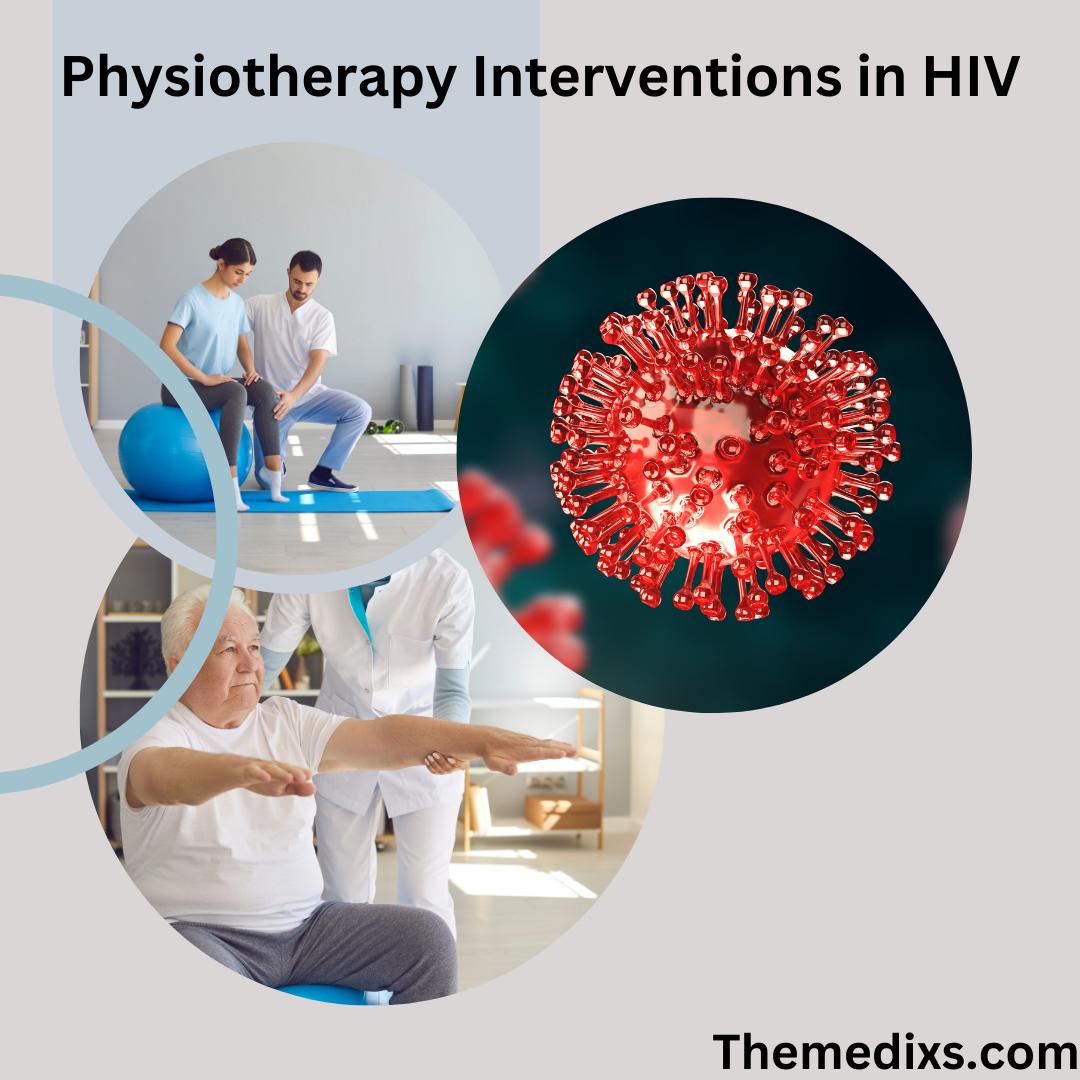Massage therapy is an ancient practice that has evolved over centuries to become one of the most popular and effective methods of promoting relaxation, alleviating pain, and enhancing overall physical and emotional well-being. Today, massage therapy plays a crucial role in healthcare, helping people manage pain, recover from injuries, and reduce stress. Whether you’re seeking relief from chronic pain, recovery from injury, or simply a way to unwind, massage therapy offers a wide range of benefits tailored to individual needs.
In this blog, we will explore the various techniques used in massage therapy, the numerous benefits it offers, and its diverse applications in promoting health and well-being.
What is Massage Therapy?
Massage therapy involves the manipulation of muscles, tendons, ligaments, and fascia using hands-on techniques. These techniques can vary in intensity, rhythm, and pressure, depending on the type of massage and the specific needs of the individual. By applying pressure to the body’s soft tissues, massage therapists can relieve tension, improve circulation, and promote relaxation.
Massage therapy has deep historical roots, dating back thousands of years to cultures such as ancient China, India, Egypt, and Greece. Over time, it has been integrated into modern medicine, where it is now recognized for its therapeutic benefits in both conventional and alternative healthcare settings.
Common Types of Massage Therapy

There are several different types of massage, each designed to target specific needs and conditions. The most commonly practiced forms of massage include:
1. Swedish Massage
Swedish massage is one of the most well-known and widely practiced types of massage. It involves long, flowing strokes, gentle kneading, and circular movements to help relax muscles and enhance circulation. Swedish massage is ideal for people in search of relaxation or relief from minor aches and tension.
- Benefits: It promotes relaxation, improves circulation, reduces muscle tension, and enhances overall well-being.
2. Deep Tissue Massage
Deep tissue massage focuses on realigning deeper layers of muscles and connective tissue. It is particularly effective for treating chronic pain, muscle stiffness, and injuries. The therapist applies slower, more intense strokes to target deep layers of muscle fibers.
- Benefits: It is beneficial for chronic pain, injury recovery, and relieving muscle tension.
3. Sports Massage
Sports massage is specifically designed for athletes or individuals who engage in regular physical activity. It focuses on preventing and treating injuries, improving performance, and enhancing recovery. Sports massage techniques vary depending on the athlete`s needs, whether it`s pre-event, post-event, or injury rehabilitation.
- Benefits: It complements athletic performance, prevents injury, reduces muscle soreness, and improves flexibility.
4. Trigger Point Therapy
Trigger point therapy targets specific areas of muscle that are particularly tight or painful, known as trigger points. These points can cause referred pain in other parts of the body. Therapists use direct pressure on trigger points to release tension and alleviate pain.
- Benefits: It effectively treats chronic pain, reduces muscle tension, and addresses pain in specific areas.
5. Shiatsu Massage
Shiatsu is a form of Japanese massage that involves applying pressure to specific points on the body using the fingers, thumbs, and palms. It is grounded in the principles of traditional Chinese medicine and aims to balance the body`s energy flow, or Qi (chi), to promote recovery and relaxation.
- Benefits: It improves energy flow, promotes relaxation, reduces stress, and may help to alleviate headaches and digestive issues.
6. Hot Stone Massage
Hot stone massage includes the use of heated stones placed on specific parts of the body to warm and relax muscles. The therapist may additionally use the stones to carry out the massage itself, providing deep relaxation and relief from muscle tension.
- Benefits: It deeply relaxes muscles, improves circulation, and alleviates stress.
7. Prenatal Massage
Prenatal massage is tailored for pregnant women, focusing on relieving common pregnancy-related discomforts including back pain, swelling, and anxiety. It is a gentle form of massage that promotes relaxation and improves circulation.
- Benefits: It alleviates pregnancy discomfort, reduces swelling, improves circulation, and promotes relaxation.
Benefits of Massage Therapy

Massage therapy provides a wide range of benefits that go beyond simply relaxing the body. Its therapeutic effects can help address physical, emotional, and mental well-being. Here are some of the key benefits:
1. Stress Reduction
One of the most widely recognized benefits of massage therapy is its ability to reduce stress. The hands-on approach helps decrease cortisol levels, the hormone associated with stress, while increasing levels of serotonin and dopamine, the body`s natural feel-good chemicals. This combination promotes a sense of calm and relaxation, decreasing anxiety and enhancing mood.
2. Pain Relief
Massage therapy is highly effective in relieving both acute and chronic pain. Whether you`re dealing with muscle soreness, headaches, or conditions like fibromyalgia, massage can alleviate discomfort by targeting the source of the pain. Deep tissue massage, trigger point therapy, and other specialized strategies are especially useful for managing pain.
3. Improved Circulation
Massage promotes higher blood go with the drift for the duration of the frame. By making use of strain to muscle tissue and gentle tissues, the therapist encourages improved oxygen and nutrient transport to cells, which aids in recovery and recovery. Improved movement additionally enables flush out pollution and metabolic waste products, selling typical health.
4. Enhanced Flexibility and Mobility
Regular rubdown remedy enables enhance flexibility and mobility via way of means of decreasing muscle tightness and growing variety of motion. This is specially useful for athletes, older adults, and people improving from injuries. Sports rubdown and deep tissue rubdown are especially powerful at enhancing muscle elasticity and joint flexibility.
5. Boosted Immune Function
Research has shown that massage therapy can enhance the immune system by increasing the activity of natural killer cells, that are part of the body`s defense against viruses and infections. Regular massage may lessen the risk of infection and enhance overall immune function.
6. Better Sleep
Massage therapy promotes relaxation and reduces tension, that can significantly improve sleep quality. Individuals who suffer from insomnia, restless nights, or disrupted sleep patterns often find relief through massage, which helps the body enter a state of deep rest conducive to restful sleep.
7. Reduced Headaches
For those who suffer from tension headaches or migraines, massage therapy may be a natural and effective way to lessen their frequency and intensity. By targeting tight muscle tissue in the neck, shoulders, and back, massage enables relieve the pressure and tension that contribute to headaches.
Applications of Massage Therapy in Healthcare
Massage therapy is a versatile treatment modality used in various healthcare settings to address a wide range of conditions. Its applications include:
1. Injury Rehabilitation:
Massage therapy plays a important role in the rehabilitation technique following an injury. Whether it`s a sports injury, a sprain, or post-surgical recovery, massage helps to promote recovery by enhancing circulation, decreasing swelling, and alleviating pain. It also prevents the formation of scar tissue and improves flexibility, helping patients regain full function more quickly.
2. Chronic Pain Management:
For individuals dealing with chronic pain conditions including arthritis, fibromyalgia, or lower back pain, massage therapy offers a non-invasive, drug-free way to control pain. Regular sessions can help reduce muscle tension, improve mobility, and enhance overall quality of life.
3. Postural Improvement:
Many people suffer from bad posture due to prolonged sitting, standing, or working at a desk. Massage therapy helps to cope with muscle imbalances and tension that contribute to bad posture, relieving discomfort and improving alignment.
4. Mental Health Support:
Massage therapy`s effect on mental health should not be underestimated. By promoting relaxation and reducing stress, it can be an effective complement to traditional treatments for anxiety, depression, and other mental health conditions. The calming effect of massage can improve mood, enhance emotional well-being, and provide relief from the physical symptoms associated with mental health issues.
5. Geriatric Care:
For older adults, massage therapy can provide numerous benefits, such as improved circulation, reduced joint stiffness, and enhanced mobility. It also helps alleviate common age-related discomforts including arthritis, back ache, and muscle tension. Additionally, massage can provide emotional support, reducing feelings of isolation and enhancing mood in aged people.
Considerations and Precautions
While massage therapy is generally safe and beneficial for most people, it’s important to consider a few precautions:
- Medical Conditions: Individuals with certain medical conditions, such as deep vein thrombosis, severe osteoporosis, or certain cardiovascular issues, should consult a healthcare provider before undergoing massage therapy.
- Pregnancy: While prenatal massage is safe for most pregnant women, it’s essential to work with a therapist who is specifically trained in pregnancy massage to ensure that the techniques used are appropriate and safe.
- Allergies and Sensitivities: Some massage oils and lotions may contain ingredients that can cause allergic reactions or skin sensitivities. Always inform your therapist of any allergies before your session.
- Open Wounds or Infections: Massage therapy should be avoided in areas with open wounds, infections, or skin conditions until they have fully healed.
Conclusion
Massage therapy is a powerful tool for promoting physical, emotional, and mental well-being. With its wide range of techniques and applications, it can address everything from stress and pain relief to injury recovery and chronic condition management. Whether you’re looking to relax, recover from an injury, or improve your overall health, massage therapy offers numerous benefits that can be tailored to your specific needs.
As the practice continues to evolve, research increasingly supports the therapeutic benefits of massage, ensuring its continued importance in both alternative and conventional healthcare settings. By incorporating regular massage therapy into your self-care routine, you can experience profound improvements in your quality of life, physical health, and emotional balance.









